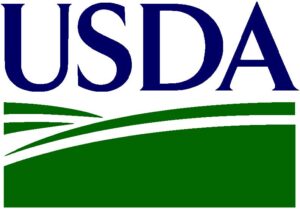Vern Grubinger, UVM Extension Vegetable and Berry Specialist, posted this request via email. Following, Vern’s email is information from Ginger Nickerson, UVM Extension’s GAPS specialist, on rules, regs, and best practices for handling flood damaged produce.
Dear Vermont growers,
I’m sorry that so many of you have had crop and infrastructure losses due to the storm. Please be aware that flooded produce is part of that loss, since FDA considers produce exposed to flood waters to be adulterated and thus illegal for sale (more info on this later). I want to provide Vermont’s Farm Service Agency and Agency of Agriculture with an overall estimate of losses to our industry so they have the information they need to work on securing additional financial assistance for farmers. Kindly email me an estimate of the $ value of your losses, main crops and number of acres affected, and describe damage to structures. I will total this information up and keep it anonymous when sharing it. If you can, get this to me end of the day tomorrow (Tuesday). If you are in another state please report losses to your Dept. of Agriculture. If you have crop insurance, or if you think you may need a disaster assistance loan, contact your county FSA office as soon as possible.
Vern (Vernon.Grubinger@uvm.edu)
And thanks to Ginger Nickerson of the UVM Extension Center for Sustainable Agriculture for compiling this information; below is our best advice on how to handled flooded fields.
Food Safety Advice to Commercial Growers Regarding Flooded Crops
Floods occur when water or runoff from surface waters such as rivers, lakes or steams overflows and runs into fields. Water from heavy rainfall that pools on the surface of saturated soils is NOT considered flooding.
Flood waters are likely to contain contaminants. These may come from upstream farms and rural septic systems, urban lawns and roadways, industrial sites or overflow from municipal sewage systems. Contaminants may include: raw manure or feces, agricultural chemicals, heavy metals or other chemical contaminants. Microbial pathogens that could be in flood waters include bacteria, viruses, and parasites.
For these reasons, the U.S. Food and Drug Administration (FDA) considers crops where the edible portion has come in contact with flood waters to be adulterated and not to be sold for human consumption. See:
http://www.fda.gov/Food/FoodDefense/Emergencies/FloodsHurricanesPowerOutages/ucm112723.htm
As painful as it may be to do, all crops with edible portions that have come in contact with flood waters should be destroyed or discarded.
Advice for flooded crops:
- Per FDA, discard all crops that have edible portions that have come in contact with flood water. Before cleaning up or destroying crops in flooded fields, check with your crop insurance and/or local Farm Services Agency (FSA) representatives regarding exact documentation to certify losses, procedures for initiating claims, possible financial assistance.
Although root crops are usually cooked and often peeled before consumption, if under flood waters, they may be considered to be grown in unsanitary conditions. We are waiting to learn more details from the FDA about their regulations, but common sense suggests that intact, undamaged crops that are to be peeled and cooked, such as winter squash, can be sold after they were flooded BUT ONLY IF flooding was for a short period of time (several hours at most) and the crop was promptly harvested and is thoroughly washed and then treated with a high rate of sanitizer such as chlorine or Sanidate before sale. We have contacted the FDA about this — if we learn differently from the FDA we will inform you as soon as we have a response.
- Place markers at the high water line so you can identify the area where crops were in contact with flood waters.
- Leave a 30 foot buffer between flooded areas of fields and adjacent areas to be harvested for human consumption; this is to accommodate a generous turn-around distance for equipment to prevent contact with flooded soil and avoid cross-contamination of non-flooded ground.
- Workers should wear protective clothing such as rubber boots and rubber gloves when working in fields that were flooded where plants that may be contaminated. Protective clothing should be discarded or thoroughly cleaned after working in flooded areas.
- Avoid feeding crops that came in contact with flood waters to livestock as plants could have pesticides, pathogens, mycotoxins, or other contaminants that could be harmful to livestock health.
- If your well head was submerged, re-test your well water to make sure that only safe, potable water comes into direct contact with produce. The VT Dept. of Health “NU” test kit costs $15 for a measure of coliform and E.coli. Call 800-660-9997 to order with credit card or request an order form.
Regarding crops near flooded areas, or with no edible parts developed or exposed to flood water:
Crops near flooded areas or those that were flooded without the edible part of the plant coming in contact with flood water (such as sweet corn or staked tomatoes) need to be evaluated on a case by case basis. These, and crops in which the edible portion develops after flood waters recede are not automatically deemed adulterated. It is your decision whether to sell them after considering the following:
- Is the edible part of the plant developing and if so, how far above the flood water was it?
- Is there any evidence that floodwater splashed up onto edible portion of the crop? Floodwater almost certainly contains some pathogens and/or chemicals.
- If feeding to livestock, was the crop exposed to prolonged periods of moisture and stress that could promote fungal growth or molds that could produce mycotoxins?
Other considerations:
- Allow at least 60 days to elapse between flooding and planting of the next human food crop. In absence of known or suspected biological or chemical contaminants in flood waters (such as sewage discharge or run-off from industrial sites) you can replant after 60 days.
- Organic growers: flood waters might contain residues of prohibited substances. Contact your certifier to discuss your situation.
- Soils should be allowed to dry sufficiently and then tilled to at least six inches deep before planting crops. Adding compost or other organic matter when tilling will be beneficial to many soils. The soil should be retested for nutrient levels after flood waters recede, as the pH and nutrient levels of the soil may have changed.
- To protect the soil from erosion, it is advisable to plant a cover crop on fields that cannot be re-planted soon with an edible crop. Cover crops can also help suppress weeds, and improve overall soil health. At this time of year (early fall) small grains such as oats or winter rye are good choices, with or without hairy vetch for adding fixed nitrogen.
For more detailed information:
- Salinas Flooding Brings Out the Consequences of the California Leafy Greens Marketing Agreement, Response by Trevor Suslow to Salinas flooding in Jim Prevor’s Perishable Pundit, April 7, 2011 http://www.perishablepundit.com/index.php?date=04/7/11#3Accessed June 6, 2011
- The Questions on Salvaging Flooded Crops, John E. Rushing, Ph.D. Department of Food Science http://www.ces.ncsu.edu/depts/foodsci/ext/pubs/salvagingfloodedcrops.PDFAccessed June 6, 2011
- Impact on Flooding on Organic Food and Fields, Jim Riddle, Organic Outreach Coordinator, University of Minnesota, 2007 http://swroc.cfans.umn.edu/prod/groups/cfans/@pub/@cfans/@swroc/documents/asset/cfans_asset_229667.pdfAccessed June 6, 2011
- Soil Testing Following Flooding: http://varietytesting.tamu.edu/criticalinformation/Freshwater%20flooding%20soil%20testing%20issues.pdf
- Assessing damage to corn and field crops: http://www.ext.nodak.edu/extnews/newsrelease/2002/061302/08assess.htm
- For Organic Growers, information from the University of Minnesota: http://swroc.cfans.umn.edu/prod/groups/cfans/@pub/@cfans/@swroc/documents/asset/cfans_asset_229667.pdf






